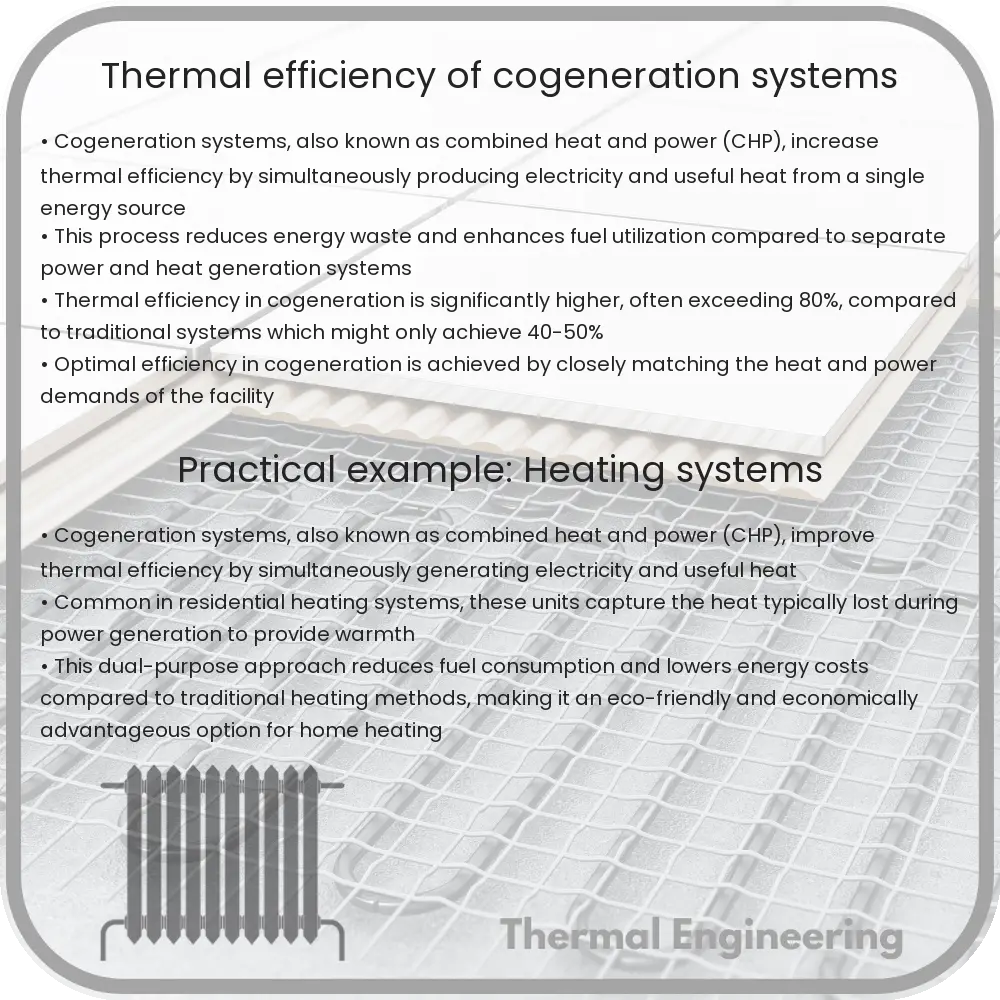Learn about the thermal efficiency of cogeneration systems, which utilize both electricity and heat to enhance energy efficiency and reduce emissions.

Understanding the Thermal Efficiency of Cogeneration Systems
Cogeneration, also known as combined heat and power (CHP), is a highly efficient process that simultaneously generates both electricity and useful heating from the same energy source. This contrasts with traditional methods of electricity generation, where vast amounts of heat are wasted. By capturing and utilizing this heat, cogeneration systems achieve higher thermal efficiencies, significantly reducing energy usage and greenhouse gas emissions.
Basics of Cogeneration
The core of a cogeneration system consists of a prime mover, such as a gas turbine, steam turbine, or internal combustion engine. This prime mover drives an electricity generator and simultaneously produces heat that is collected and used instead of being released into the environment. The synergistic use of electricity and heat boosts the system’s overall efficiency.
Calculating the Thermal Efficiency of Cogeneration Systems
The thermal efficiency of a cogeneration system is calculated by the formula:
\[
\text{Thermal Efficiency} (\%) = \left( \frac{\text{Useful Energy Output}}{\text{Total Energy Input}} \right) \times 100
\]
Where:
- Useful Energy Output is the sum of the electrical and thermal energy produced.
- Total Energy Input is the total energy supplied to the system, typically in the form of fuel.
Importantly, the efficiency of cogeneration systems can exceed 80%, significantly higher than the efficiencies of separate heat and power systems, which might only be around 50% efficient when considered individually.
Factors Influencing Thermal Efficiency
Several factors can affect the thermal efficiency of cogeneration systems:
- Type of Prime Mover: Different technologies, like steam turbines and gas turbines, have varying efficiencies.
- Quality of Fuel: The type and quality of fuel used can influence the system’s efficiency. Natural gas, for instance, typically results in higher efficiency levels compared to coal.
- System Configuration: The design and integration of the cogeneration system also play critical roles in determining efficiency.
Applications and Benefits
Cogeneration systems are ideally suited for applications where there is a steady demand for both electricity and heat. Common examples include industrial sites, hospitals, and university campuses. The benefits of these systems, aside from their high efficiency, include reduced energy costs and lower emissions of pollutants and greenhouse gases.
Conclusion
Thermal efficiency is a crucial metric for assessing cogeneration systems, highlighting their advantage over traditional power generation methods. By understanding and improving these systems, industries can make substantial gains in energy efficiency, cost savings, and environmental protection. As the world moves towards more sustainable energy solutions, the role of cogeneration systems is likely to expand, underscoring the importance of optimizing their performance and deployment.